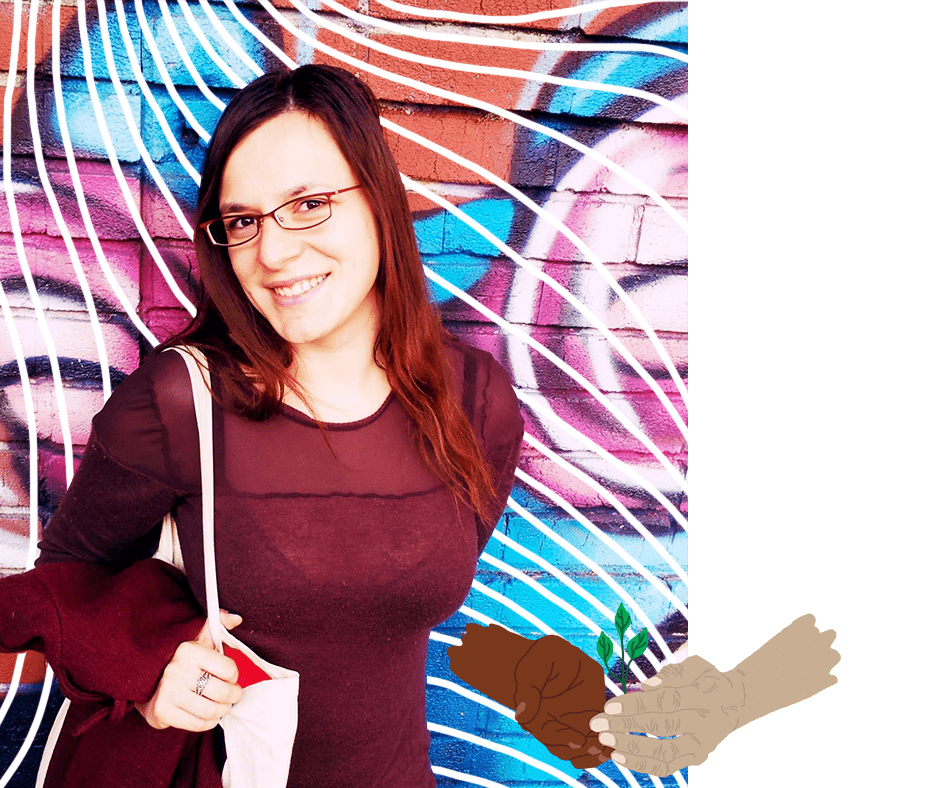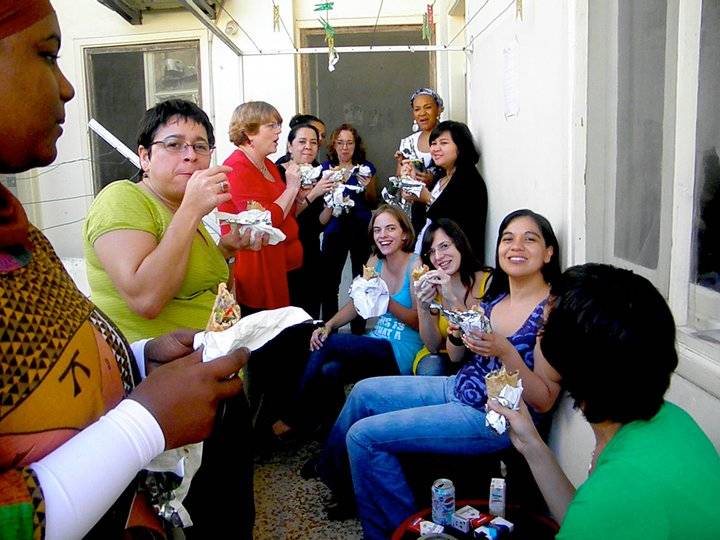Mariam Gagoshashvili, Senior Program Officer at the Astraea Lesbian Foundation for Justice and founding advisor for FRIDA, started growing her activist wings in Tbilisi, Georgia. Here, she speaks about the politics of age and the power of the intergenerational work and learning that informed so much of her feminist activism.

“Who is that lesbian?”
An older woman asked Mariam’s colleague on the other side of the room from where she was sitting. Mariam was at a UN funding meeting as a representative of Women’s Fund in Georgia, twenty-something years of age and giving voice to the concerns of LGBT youth and young feminists, much to the frustration of the older woman. Mariam recalls the memory, “one of many,” in which she felt sidelined in what she perceived to be a sexually conservative women’s rights movement in Georgia. “I was very aware of being young in the movement.”
Growing up in a nuclear family in Tbilisi, Mariam was conscious of the gendered divisions of roles, responsibilities and expectations from a very young age. “I grew up very free, a tomboy, climbing on trees and rooftops…” which started to change as she reached adolescence when her father started to expect changes in her behaviour. She first became vocal about women’s rights, sexuality and sex, in general, in her late teens, and it was her studies in gender that informed her understanding of people as sexual subjects and enabled her to articulate much of the inequalities to which she had been exposed since childhood.
Mariam’s first experience of the power of intergenerational activism was working with her own mother. “I knew my mom was working in the so-called ‘NGO sector,’ focussing on ‘women’s issues,’” but it was only when she started to engage in activist work herself that she started to acknowledge her mom as a feminist, and see the importance of intergenerational learning. Mariam writes about her mother in An Open Letter to the Feminists of My Life: Grandmothers, Mothers, and Sisters, “She was a feminist who became one before she knew it. She taught me more about activism than I had learnt from books and essays, and she learnt about feminism from me more than she had learnt from women’s organizations. I introduced her to feminist theory, and she showed me ways to translate it into feminist action. In this symbiotic relationship, we raised each other as feminists. We became each other’s feminist mothers, daughters, and sisters – all at the same time.”
In part, the recognition of the need for intergenerational activism was why it was so important to initiate a young feminist fund at the time when FRIDA was born. Having young women lead their own activism in philanthropic spaces was vital for young women’s voices to have an impact in how funding on a global scale was done. Since its inception, “FRIDA has managed to show the power, brilliance, and beauty of young feminist organising, and also of intergenerational organisation…I think philanthropy has really listened to FRIDA, and is really admiring it. There has been so much curiosity around the model of participatory grant-making, also because of all the philanthropy advocacy reports about funding for young feminist movements, and sharing really great stories about that. I feel the difference, definitely. Back then, we had to make a case: why young women, and why young feminists. Now, I don’t think we need to do that anymore.”

“As a funder, you have so much power,” says Mariam, thinking back on the woman at that UN meeting and how aware she was of this. “When she heard I was a funder, she started being so nice to me, and started to have all this respect for me…it’s quite sad actually…that power dynamic is something I’m very aware of.” In the context of the global philanthropic arena, the absence of young feminist voices meant that until FRIDA, young feminists were not leading their own activism and managing their resources for themselves. “From the kind of connection I still have with FRIDA, I can see that this is an unstoppable force. It just grows in the right direction and it grows in really beautiful ways, gaining more visibility and recognition for young feminist organising.”
Speaking on the ways FRIDA has given voice to the concerns of LGBTQ youth in philanthropic spaces, Mariam emphasises that intersectionality was always a core value of FRIDA’s. “It funds across movements and it’s been doing that from day one. It is not this thing of, ‘Oh,’ they heard the word ‘intersectional’” and now are claiming it. “‘Intersectionality’ is like a buzzword in philanthropy now. FRIDA knew that it was doing it intentionally, that [their activism] was about all kinds of movements…FRIDA has been very clear on that: on sexual justice, on politics. It’s really awesome.”
One of the biggest learnings for Mariam was working with age as an identity category. “The definition of ‘young’ is so arbitrary, I think. Any definition of youth would be. I don’t think that there is a real moment where a person becomes not young anymore. That’s a constant struggle…it’s challenging to work with such a fluid framework. People in that movement age out, so how it affects organising, how it affects the leadership transitions in the organisation and how it affects the preservation of memory – institutional memory and movement memory – are important considerations. And because someone is always a former young feminist [laughs], and they are older, then what does it say about the potential of intergenerational work? Like me, I don’t consider myself a young feminist anymore, but I am definitely an ally in it.”
Perhaps, “if you feel young, then you are, if you don’t then you’re not.” No matter how ‘young’ is defined, what Mariam’s experiences make clear is that for movements to be strong and strategic, there needs to be a continuity of cross-generational learning and solidarity. In that way, may young feminist movements across the world continue to grow, accumulate experiences, share knowledge and deepen their wisdom.